Can Forsythia Bushes Predict The Weather?
Forsythia in full bloom are a welcome sight after a long winter. But do those yellow flowers mean snow is on the way? See the history and folklore surrounding these harbingers of spring.
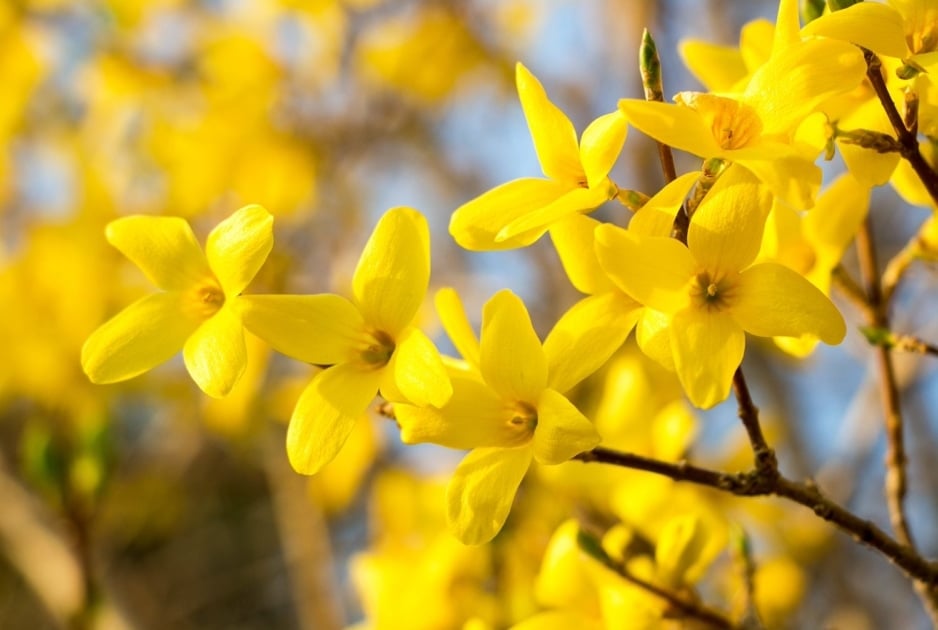
Forsythia are among the earliest flowers to awaken from winter’s slumber. That’s why they’re the perfect shrub to treat a classic case of spring fever. Branches burst with golden yellow flowers before the leaves bud, usually about the same time that daffodils and other spring flowers are also budding. But forsythia bushes are more than just a harbinger of spring: they have an interesting history, and they’ve even got their own weather lore. If you’re interested in growing them, there’s good news: they’re an easy shrub to maintain. Without a lot of fuss, these eye-catching shrubs will reward you with boughs of sunny blooms year after year.
The forsythia varieties that we commonly see as part of the landscape are Forsythia suspensa and Forsythia viridissima, regarded as the “founding members of the forsythia family” as they were the earliest of the genus to be brought west from the Far East. By 1880, a cross between the two resulted in a new species, Forsythia x intermedia, which is another common species today found along roadways, backyards, and city parks.
Forsythia and Weather Lore
Do these sunny yellow blooms mean snow is on the way? One of the most popular bits of folklore surrounding forsythia is the saying, “three snows after the forsythias bloom.” This saying most likely developed because when the forsythias bloom—during the earliest part of spring—the full transition from winter isn’t quite complete. In other words, don’t pack away those shovels when you see those little yellow flowers! Many people swear by this bit of weather lore, especially weather watchers in Ohio.
RELATED: Spring Weather Forecast
In some areas, forsythia is also known as the “Easter Tree,” with this name stemming from the fact that they come into bloom around Easter time.
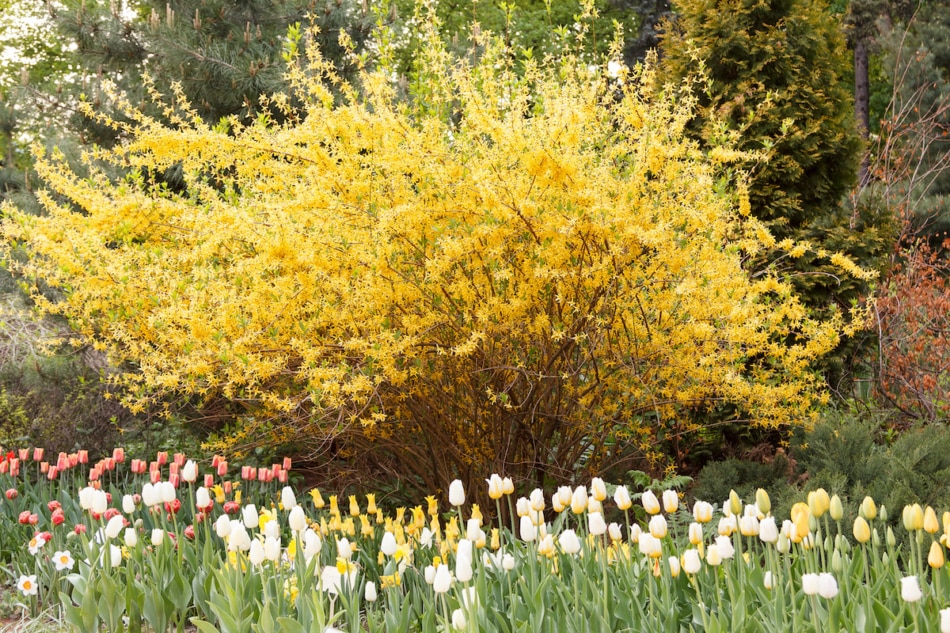
Forsythia As Medicine
Forsythia is also one of the 50 fundamental herbs in Chinese herbal medicine. Forsythia suspensa, the weeping variety, also referred to as “lian qiao,” is considered a bitter, cold herb, and Chinese medicine associates it with the heart, lung, and gall bladder meridians. Chinese herbalists use it to detoxify the body, and as a remedy for headaches, fevers, and excessive thirst.
Note: Information on fok medicine is purely for educational purposes. The Farmers’ Almanac does not offer medical advice.
Behind the Name
This yellow-flowering shrub is named after William Forsyth (1737—1804), a Scottish botanist who became the royal head gardener at Kensington Palace and St. James’s Palace in England where he remained until his death.
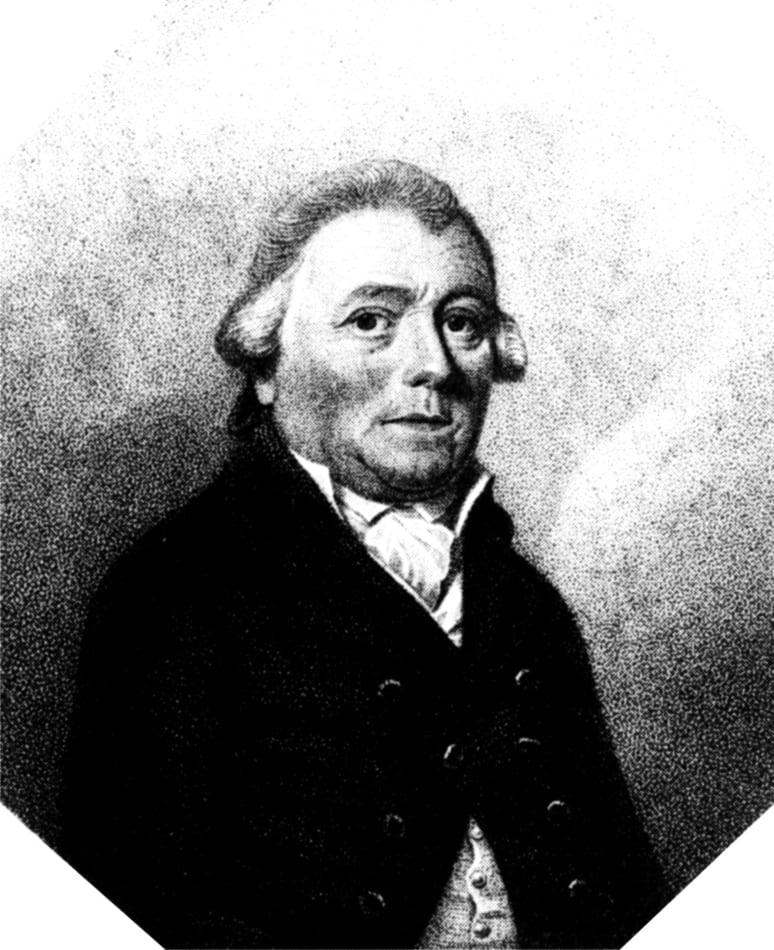
Forsyth was also a founding member of the Royal Horticultural Society in London. He created one of the world’s first rock gardens at the Chelsea Physic Garden, the oldest botanical garden in London. He had such a huge impact on gardening at the time that forsythias were named in his honor.
Growing Forsythia – A Pollinator Favorite
Forsythias are a deciduous shrub, meaning they’ll drop their leaves in the fall and winter. If you’re looking for a flowering shrub that fills in quickly, these beauties grow fast—up to 24 inches per year and up to 10 feet for larger varieties. Apart from the uncommon weeping forsythia, most of the shrubs have an upright form with long branches. And they’re a pollinator favorite as bees and butterflies love them.
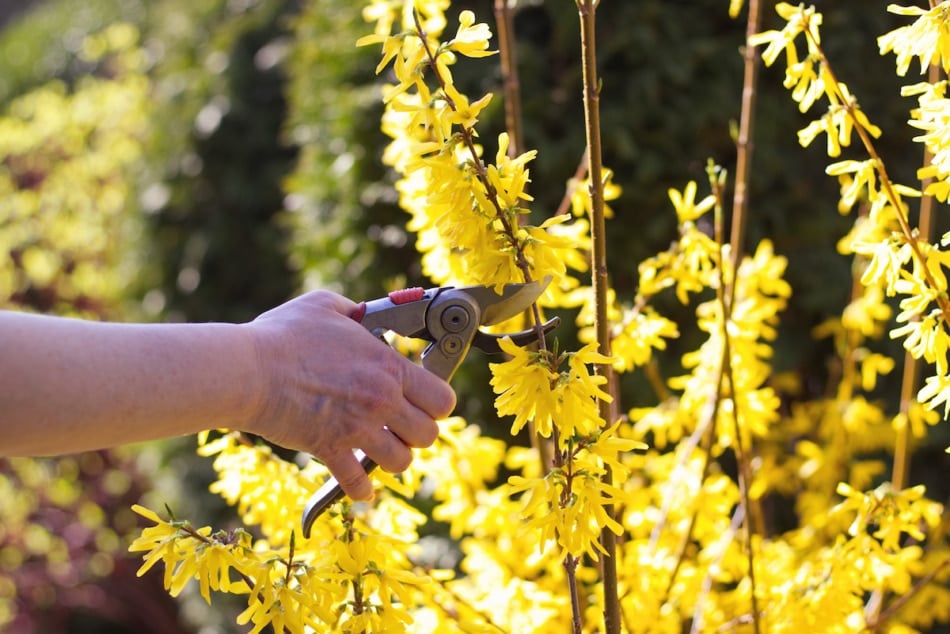
Plant them in loose soil that is moderately moist but not too wet or dry—it should drain well. They’ll grow in full sun to part shade, though the more shade they get, the leggier they will be. Forsythia is cold hardy in USDA zones 5 through 8.
RELATED: Gardening by the Moon Calendar
When To Prune Forsythia
Take care with pruning. Because these shrubs grow so quickly and with such long branches, they can quickly start to look unkempt—which is perfect if you’re cultivating a wild woodland look. However, if you want to keep your forsythia bushes tidy, your best bet is to wait until after their spring flowering before breaking out the clippers. Then prune out about a third of the oldest branches. If need be, you can even cut all of the branches to the ground and let the forsythia re-sprout from scratch. This is an extreme measure that you may not want to take if you want a lot of greenery over the summer.
Join the Discussion
Do you have forsythia bushes on your property?
Weather watchers, do you think the expression “three snows after the forsythia bloom” rings true?
Share your experience and thoughts in the comments!

Amber Kanuckel
Amber Kanuckel is a freelance writer from rural Ohio who loves all things outdoors. She specializes in home, garden, environmental, and green living topics.


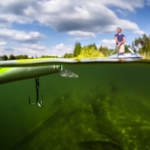

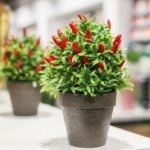

This is a Great Article 👍, Our Daffodils bloomed late February. Then we had Huge Winter Storm here in Nor. Cal, USA. The Daffodils just hung their heads, but, popped back up as soon as the storm passed.
We won’t start to see buds for weeks yet.
Light winter but no signs on bushes yet.
In the South the most common name is “Yellow Bell” bush. Those long branches make great little switches too. Lol they work.